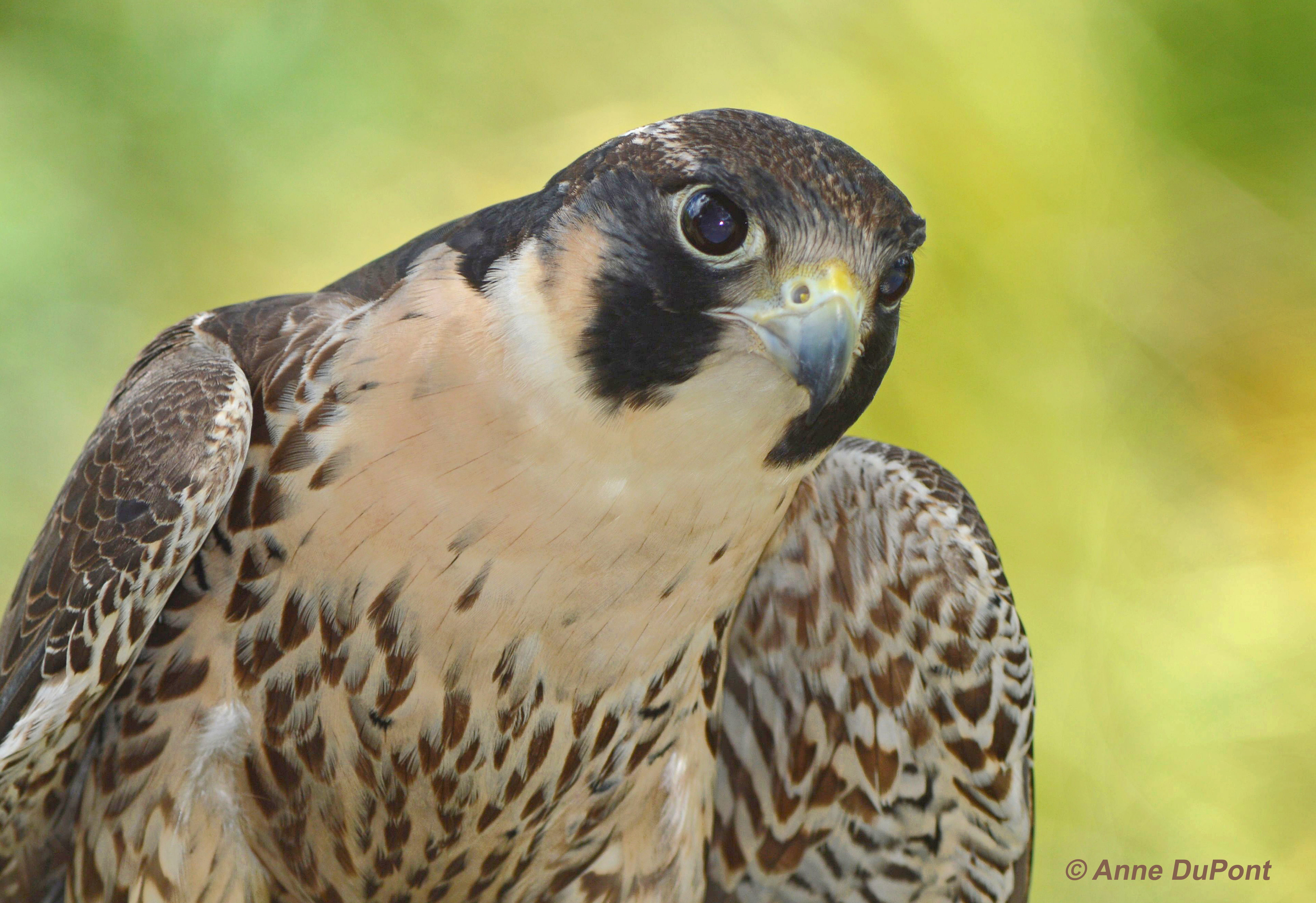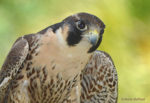
September’s Bird of the Month is the Peregrine Falcon, and here is the article in the upcoming September 2018 Kite written by Clive and Celecia Pinnock.
September Bird of the Month – Peregrine Falcon
Peregrine Falcon (Falco peregrinus))
by Clive and Celecia Pinnock
The word “peregrine, “which means “wanderer,” is an appropriate name for the world’s most wide-spread falcon. Except for the Arctic and the Antarctic, peregrines can be found from coastal to mountain regions and from deserts to cities.
Like other falcons, peregrines are distinguished from hawks by their long, pointed wings. Females are larger than males, which are about one-third smaller. Because of their smaller size, males are also called “tiercel,” which means “third.”
One of the most notable traits of the Peregrine Falcon is its speed. It is actually the fastest animal on the planet. A group of German scientists have clocked a peregrine in a dive, or “stoop,” at 217 miles an hour. The stoop refers to the bird’s hunting strategy of climbing in flight high above its quarry, typically another bird, folding its wings and diving at staggering speeds towards its prey.
It is usually at this point that the peregrine will fold its talons into a “fist,” knocking the prey unconscious. It will sometimes grab the prey and take it to the ground, where it immediately decapitates it, using its notched, or “toothed,” upper mandible or beak.
Peregrines were virtually eradicated from eastern North America by pesticide poisoning (DDT) used in agriculture to eliminate crop-destroying insects in the mid- 20th century. The pesticide’s sinister effect on the environment became evident with the disappearance of peregrines and other birds. DDT not only found its way into birds catching and eating the infected insects but also into canals and other waterways, where it was ingested by fish and other aquatic fauna.
Tainted prey such as the birds eaten by peregrines, were soon causing a cumulative buildup of toxins in their bodies, leading to females laying thin-shelled eggs. The weight of the incubating birds would then break and destroy the eggs.
After significant recovery efforts, Peregrine Falcons have made an incredible comeback from the brink of extinction and are now regularly observed in many large cities and coastal areas.
Photographers – please note that next month’s October bird of the month is the
Red-breasted Merganser.
Please check out the picture by Anne DuPont in the September KITE cover and to see the slide show of the entire virtual gallery this month, along with photographer etc — click on BOM SLIDE SHOW below the pictures displayed here:
[flickr_set id=”72157672585873658″ max_num_photos=”100″]
BOM SLIDE SHOW – September 2018 Bird of the Month – Peregrine Falcon


Comments are closed